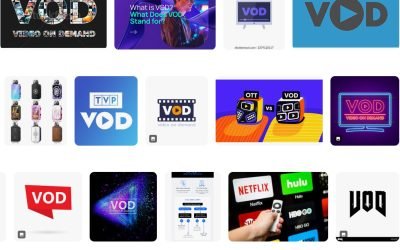The Evolution of 3D Animation
Entertainment for Kids! The journey of 3D animation in children’s entertainment began in the late 20th century when traditional 2D animation dominated the industry. Early examples of animation, such as Disney’s classic films, laid the groundwork for storytelling techniques that captivated audiences. However, as technology advanced, the industry began to explore new possibilities, leading to the development of 3D animation.
One of the key milestones in this evolution was the introduction of computer-generated imagery (CGI), which revolutionized the animation process. The debut of Pixar’s “Toy Story” in 1995 marked a significant turning point, as it was the first entirely 3D animated feature film. This innovation demonstrated the potential of CGI and opened the door for countless other animated films to embrace this technology, transforming both aesthetics and narratives. Over the years, we have seen numerous animated classics emerge, with studios continually pushing the boundaries of creativity and technical capabilities.
Technological advancements such as improved rendering techniques, enhanced graphics processing abilities, and sophisticated animation software have played a pivotal role in this transformation. Major studios, including Pixar, DreamWorks, and Illumination, have led the charge in producing visually stunning animations that appeal to young audiences. The introduction of motion-capture technology allowed animators to create more realistic and relatable characters, thereby enriching viewers’ experiences.
As 3D animation has evolved, it has also influenced storytelling techniques. Modern narratives often incorporate complex themes and emotional depth, allowing for more profound connections between the characters and young viewers. These developments have led to an array of animated children’s films that not only entertain but also educate, laying the foundation for a new era in animated storytelling.
Entertainment for Kids! The Importance of 3D Animation in Engaging Young Audiences
In today’s digital age, 3D animation has emerged as a powerful tool in captivating children’s attention and enhancing their learning experiences. Psychologically, children are naturally drawn to colorful visuals and imaginative worlds that 3D animation provides. The vibrant colors and dynamic movements inherent in animated content stimulate young minds, fostering a sense of wonder and excitement. As a result, 3D animations are effective in holding children’s interest, particularly in educational contexts where engaging content can significantly impact comprehension and retention.
From a cognitive perspective, 3D animations help facilitate understanding by presenting complex ideas in a simplified and visually appealing manner. Studies have shown that children are more likely to grasp abstract concepts when they are represented through animated characters and engaging storylines. For instance, research indicates that children who watch educational programs that incorporate 3D animation outperform their peers in subjects such as mathematics and science, highlighting the educational potential of animated content.
Moreover, the use of relatable characters in 3D animations allows children to connect emotionally with the narratives. This connection not only makes the content more enjoyable but also encourages empathy and moral development. Experts in child psychology assert that children learn effectively through storytelling, particularly when it involves characters that embody traits they can relate to or aspire to emulate. Consequently, 3D animations provide an ideal medium for imparting important life lessons and values to young audiences.
In conclusion, 3D animation serves as a multifaceted tool for engaging children, blending entertainment with educational opportunities. By capturing attention through imaginative visuals and dynamic stories, 3D animations effectively contribute to children’s cognitive development and creativity, making them an invaluable resource in modern education and entertainment for kids.
Entertainment for Kids! Popular 3D Animated Cartoons and Their Impact
3D animated cartoons have revolutionized children’s entertainment, creating an engaging medium that combines storytelling with captivating visuals. Among the most beloved examples is Pixar’s ‘Toy Story,’ which not only introduced audiences to memorable characters like Woody and Buzz Lightyear but also explored themes of friendship, loyalty, and the importance of embracing change. The innovative animation techniques set a new standard in filmmaking, allowing children to connect with the emotional journeys of animated figures in a profound way.
Another notable example is Disney’s ‘Frozen,’ which garnered immense popularity due to its memorable songs and relatable characters such as Elsa and Anna. The themes of sisterhood, self-acceptance, and resilience resonate deeply with young viewers, allowing them to navigate their own feelings of identity and belonging. Through its vibrant animation and compelling narrative, ‘Frozen’ has established a cultural phenomenon that teaches valuable lessons about love and self-discovery, inspiring children to find their voices.
In addition to these films, television series like ‘How to Train Your Dragon: The Hidden World’ has contributed to the landscape of 3D animation, captivating audiences with its enchanting storylines and character development. The series promotes values of courage, friendship, and acceptance, reflecting the journeys of young protagonists as they face challenges and grow in their understanding of the world around them.
These 3D animated cartoons not only entertain but also serve as significant tools for cultural education, presenting ideas that shape children’s values and beliefs. By addressing complex subjects in an appropriate manner, they assist in developing empathy and understanding, enabling young viewers to engage thoughtfully with diverse narratives. The impact of these animations extends beyond mere entertainment, influencing the upbringing and perspective of the new generation.
Entertainment for Kids! The Future of 3D Animation
The landscape of 3D animation in children’s entertainment is on the cusp of a significant transformation, driven by advancements in technology and a growing understanding of audience needs. One notable trend is the increasing incorporation of virtual reality (VR) and augmented reality (AR) into animated content. These cutting-edge technologies are set to revolutionize interactive storytelling, allowing children to step into the animated world and become active participants in narratives. Through immersive experiences, children can forge deeper connections with characters, making the storytelling process far more engaging and meaningful.
As these technological innovations evolve, it is anticipated that content creators will unleash their creativity, crafting new experiences that merge animation with real-world environments. This convergence can facilitate educational opportunities, encouraging children to explore learning concepts in a fun, interactive manner. Furthermore, the potential for gamification within animation will likely resonate well with young audiences, fostering an environment where learning and play coexist harmoniously.
Another critical aspect of the future of 3D animation in kid’s entertainment lies in the emphasis on inclusivity and diversity.
As society becomes more aware of the importance of representation, animated narratives must reflect the rich tapestry of cultures, backgrounds, and experiences found in the real world. By showcasing a diverse array of characters and stories, 3D animations can resonate more deeply with children from various backgrounds, empowering them to see themselves represented onscreen.
Ultimately, the evolving world of 3D animation holds great promise for the future of children’s entertainment. By embracing emerging technologies like VR and AR while prioritizing inclusivity, creators can enhance traditional storytelling approaches.
Such advancements not only entertain but also educate, inspire, and connect with young audiences, setting the stage for a vibrant and dynamic future in animation.













